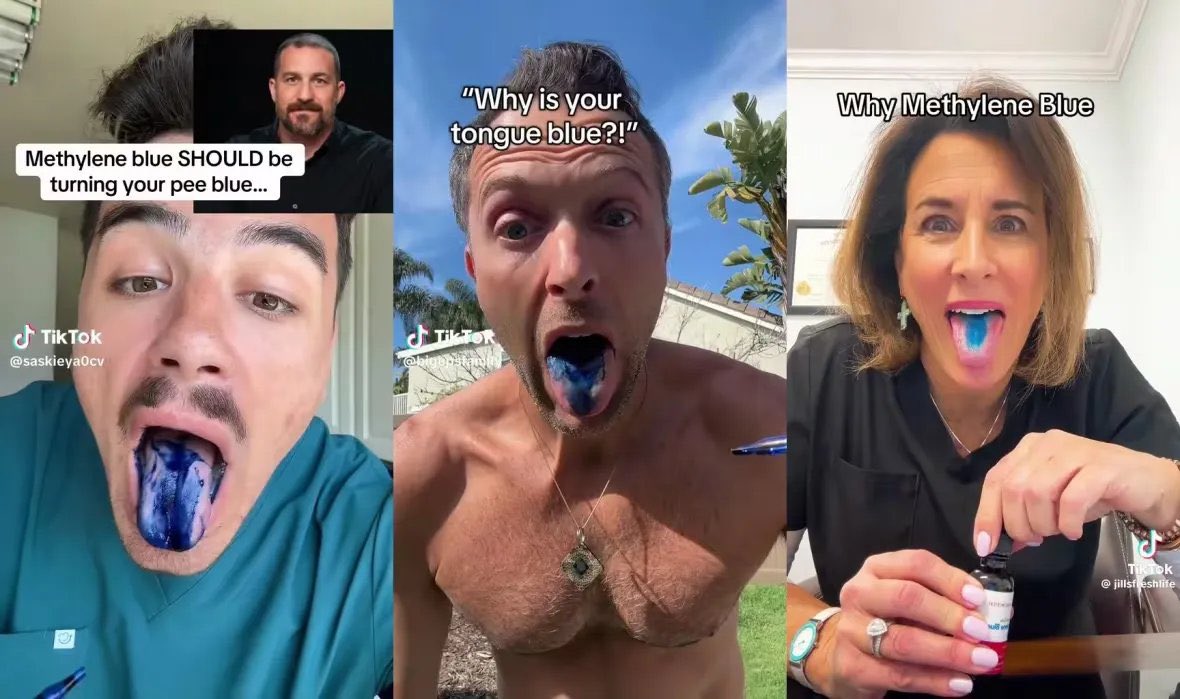Methylene Blue: Old School Dye or Mitochondria Hack?
Let’s take a trip down a weird-but-interesting lane.
Ever heard of a substance that turns your pee blue and might help your brain work better? Yep, welcome to the world of methylene blue.
This little molecule has been around since the 1800s. It started off as a textile dye, then got repurposed as a medicine—because… well why not? People started using it to treat malaria, and somewhere along the way, doctors realised: “Hey, when people take this stuff, their urine turns blue. Handy!” So they used it as a sneaky little trick to check if patients were actually taking their meds. If the pee wasn’t blue, someone was telling porky pies. Genius, right?

The Buzz Around Methylene Blue
Fast forward to today, and MB is trending all over social media. Just scroll through Instagram and you’ll see wellness influencers with bright blue tongues like they’ve been licking Smurfs. It’s become a badge of honour in the biohacking community
But what’s all the fuss really about?
Powering Up Your Mitochondria (a.k.a. Your Body’s Batteries)
Your cells make energy using mitochondria—tiny little factories that keep everything from your brain to your muscles humming. But when those mitochondria start slacking (thanks to aging, stress, poor sleep, or too many energy drinks), you feel it. Brain fog. Low energy. Moody Mondays every day of the week.
MB acts like a car jump-starter for your mitochondria, helping them make energy more efficiently. It’s kind of like topping off your fuel tank with premium petrol… if your engine is running rough.
And get this—because it crosses the blood-brain barrier (that VIP section protecting your noggin), it can even turn your brain blue. Not in a “Smurf emergency” kind of way—but more like MB is literally staining parts of your nervous system as it works its cellular magic. Crazy hey ?

The Catch (Because There’s Always a Catch)
Not everyone’s throwing confetti over MB. Experts like Paul Saladino are pumping the brakes, especially when healthy folks start popping it like it’s the next multivitamin. His point? If your mitochondria is already humming along, why mess with the wiring?
It’s like pouring espresso into a toddler. Maybe unnecessary. Maybe not a great idea.
So… Should You Try It?
MB isn’t a scam. It’s been used in hospitals for decades, and research is legit. But it’s also not candy. You want to be smart about the source (no aquarium-grade, please), know your dose, and understand it’s a tool—not a miracle.
Also, prepare for some surprises: blue pee, blue tongue, and maybe even a blue brain (okay, only under a microscope—but still). It’s a commitment.
Bottom Line
Methylene blue is like digging up your granddad’s old Swiss Army knife. Strange. Maybe useful. Definitely something you want to understand before flipping open the blade.
For a small group of people—especially those dealing with real mitochondrial issues—this little blue molecule might just be game-changing. But for the average healthy human, jumping on the bandwagon because it looks cool on Instagram could do more harm than good.
Blue pee and blue brains might make for a great post, but they’re no substitute for sleep, sunlight, movement, and real food.
Stay curious but remember—not everything trending is meant for everyone.

Recent Comments